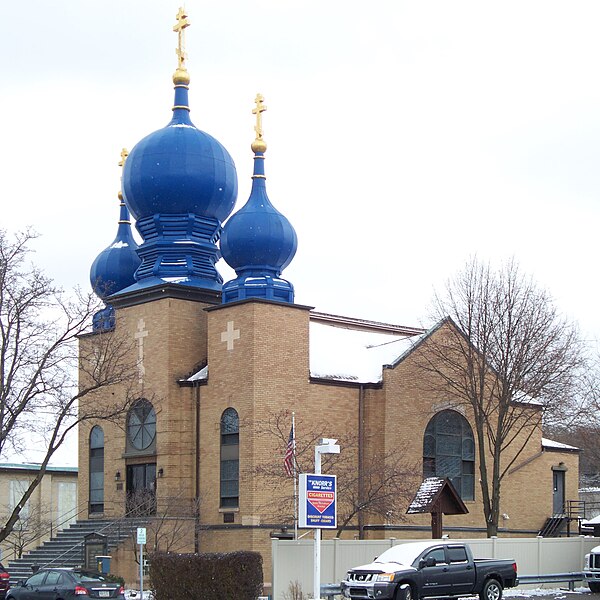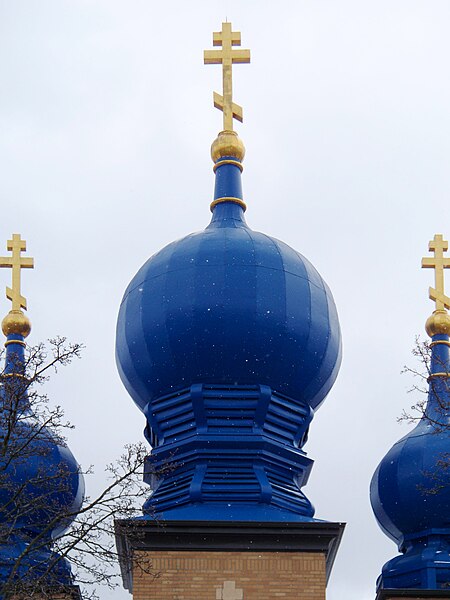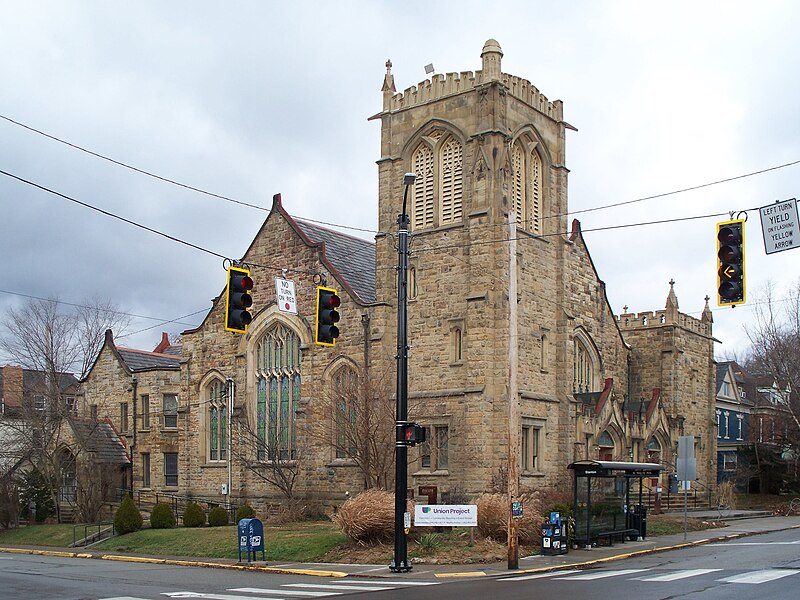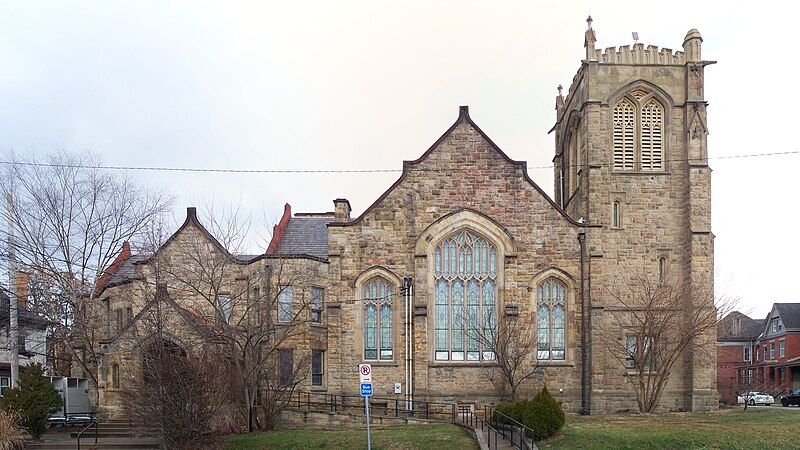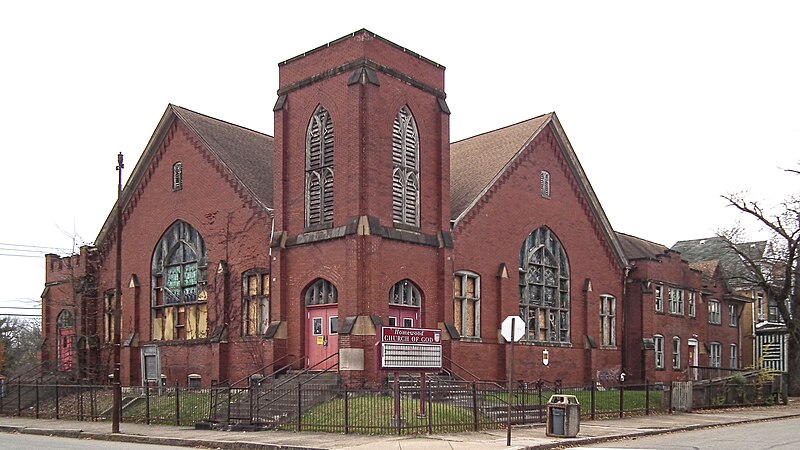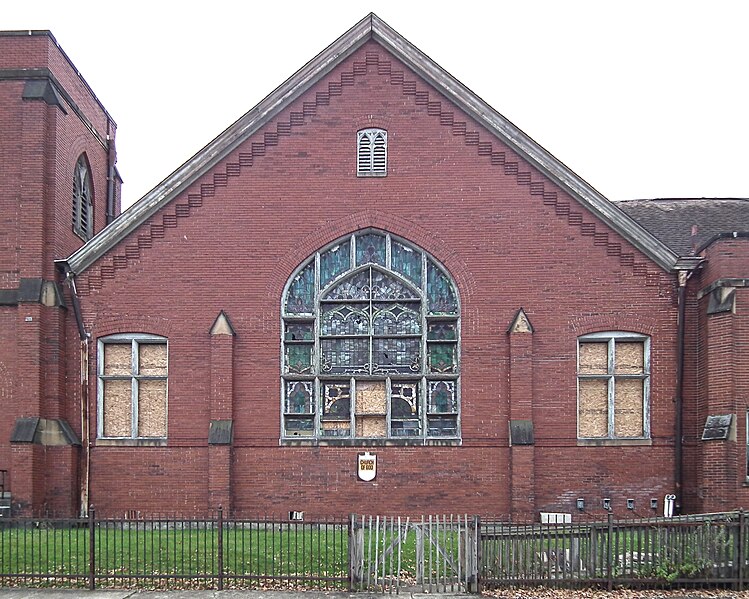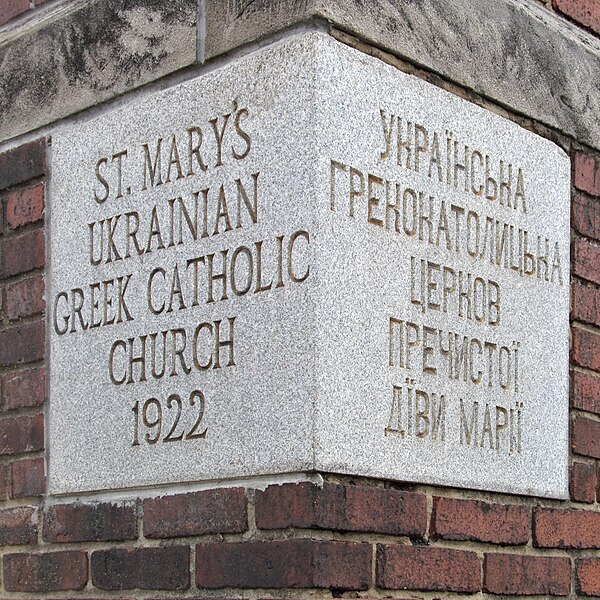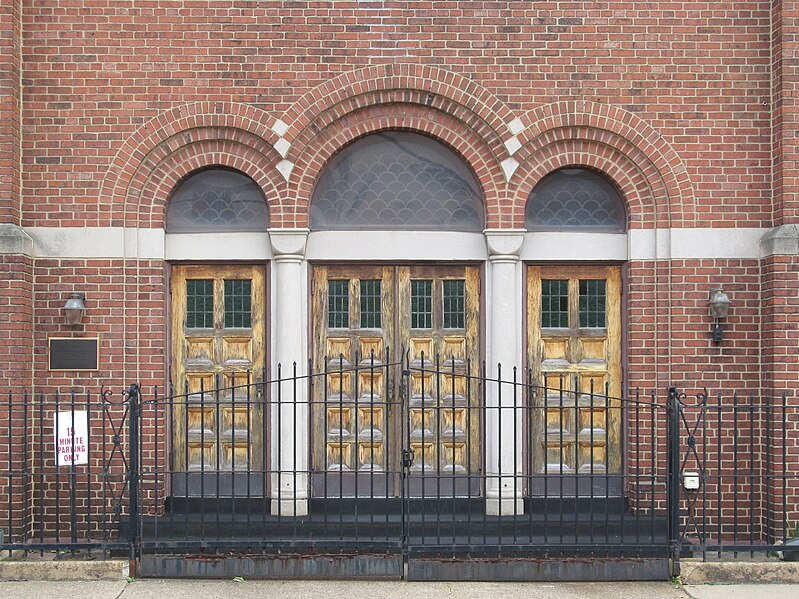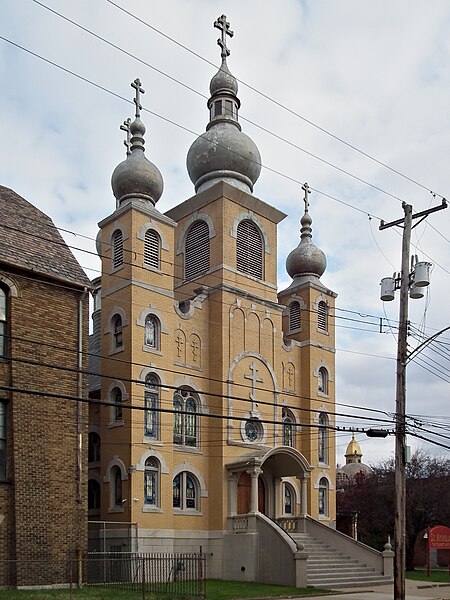
Now Emmaus Deliverance Ministries. Designed by John Lewis Beatty, this late-Gothic-style church was built in about 1925. (The cornerstone has been effaced, which old Pa Pitt regards as cheating, though he understands that a new congregation likes to make a new beginning.)

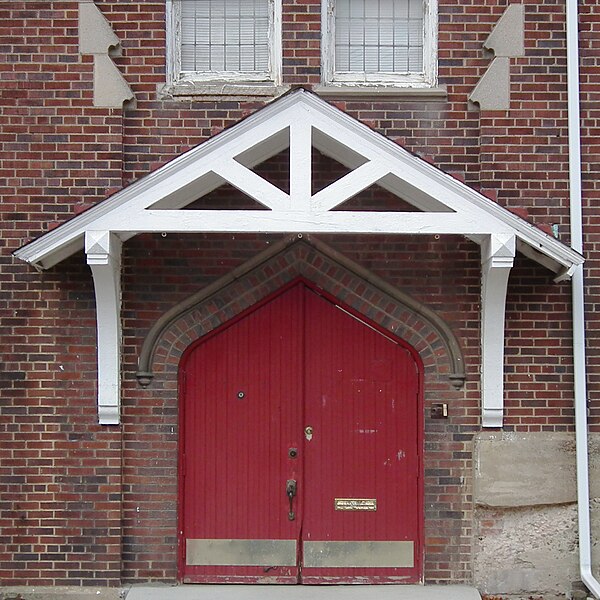
A Gothic church must maintain a delicate balance: it wants to be impressive, but it also wants to be welcoming. The simple woodwork over the entrances (this one is the basement entrance) gets the balance right: it fits well with the style of the building, matching the angle of the Gothic arches, but it sends the message that we’re just plain folks here.



